From K-9 to Hero: Exploring Police Dogs Breed
- From K-9 to Hero: Exploring Police Dogs Breed
- Police Dogs Breed
- History of Police Dogs
- Top Police Dogs Breed
- Traits of an Ideal Police Dog
- Importance of Temperament
- Intelligence in Police Dogs
- Training Methods for Police Dogs
- Physical Strength and Endurance
- Specialized Roles for Police Dogs
- Police Dogs in Urban vs. Rural Settings
- How Police Dogs Bond with Handlers
- The Selection Process
- Training Programs for Police Dogs
- Health and Well-Being of Police Dogs
- Retirement of Police Dogs
- Police Dogs and the Legal System
- Myths About Police Dogs
- The Future of Police Dogs
- Conclusion
- FAQs
What Makes Police Dogs Special?
Police dogs have become indispensable assets in law enforcement agencies around the world. With their unmatched loyalty, intelligence, and strength, they perform duties that are crucial for public safety. Whether it’s tracking suspects, detecting explosives, or helping with search-and-rescue missions, these highly trained canines serve as trustworthy partners to human officers. But what sets certain breeds apart for such high-stakes roles? The “police dogs breed” is a specialized category of dogs that excel in law enforcement, and understanding the unique traits that make them ideal for this line of work is crucial.
Police Dogs Breed
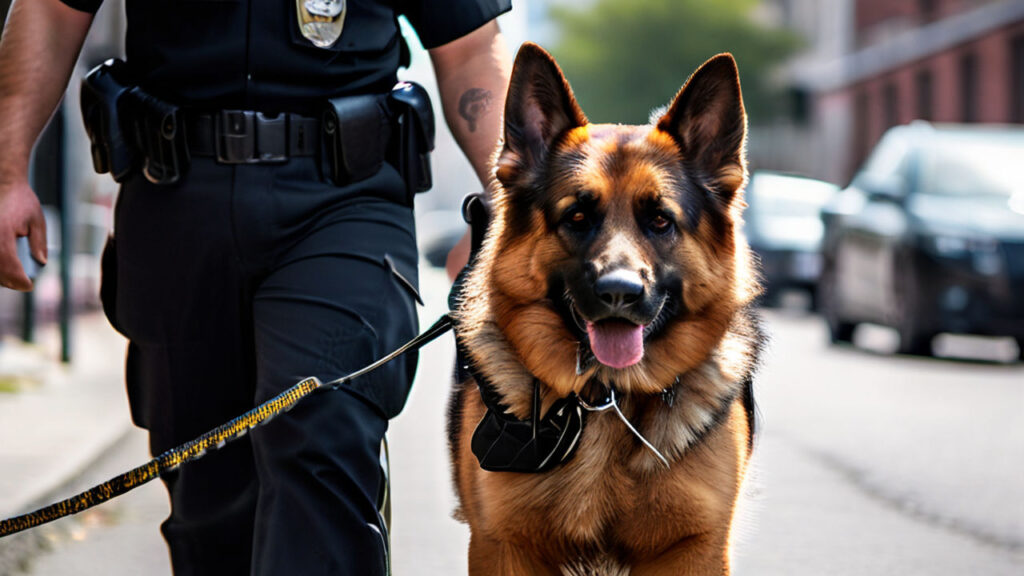
The Key Traits for Selecting Police Dogs
The police dogs breed includes a variety of breeds specifically chosen for their exceptional physical and mental capabilities. Selecting the right police dog breed is essential because it directly impacts the effectiveness of the dog in its assigned roles. Police dogs are often selected based on a combination of intelligence, strength, and temperament. They need to be able to quickly learn commands, endure long hours of physical work, and remain calm under pressure.
Police dog breeds are typically medium to large dogs, as they require enough physical strength to apprehend suspects or endure long tracking missions. Additionally, temperament is a key consideration—police dogs must be both aggressive when needed and controlled when working alongside civilians.
History of Police Dogs
How the Role of Police Dogs Evolved Over Time
The history of police dogs dates back centuries, but their official role in law enforcement became more pronounced in the 19th century. Initially, dogs were used for tracking and guarding, but as law enforcement tactics evolved, so did the use of these intelligent animals. Today, they are utilized in a wide range of specialized tasks, from bomb detection to narcotics searches and even cybercrime detection in some instances. This evolution demonstrates the growing respect and reliance on the police dogs breed.
Top Police Dogs Breed
Several breeds have become synonymous with police work due to their specialized skills. Let’s explore the most well-known breeds and their distinctive qualities:
German Shepherd
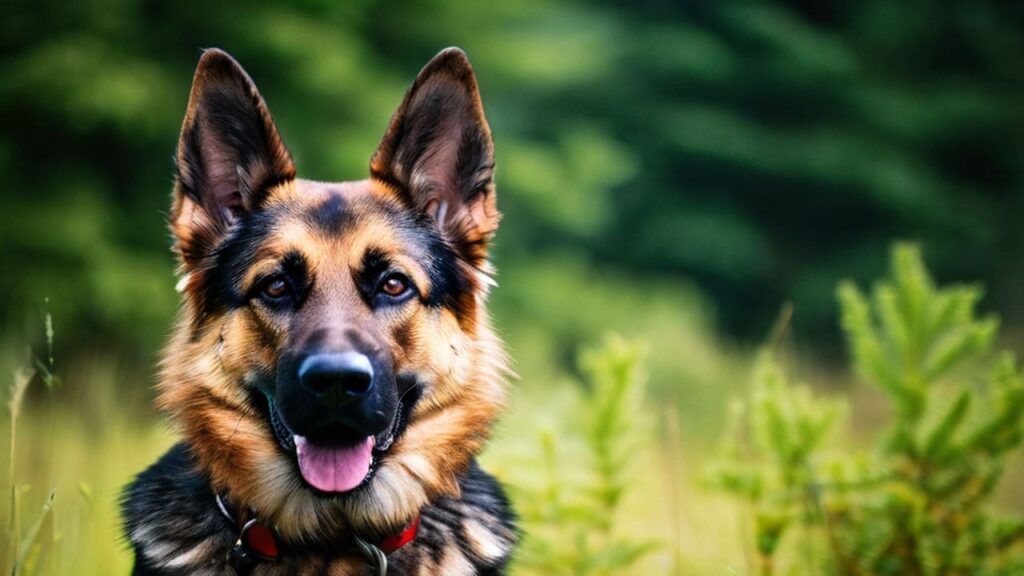
The Iconic Police Dog
The German Shepherd is perhaps the most recognized police dog breed. Known for their intelligence, loyalty, and physical prowess, these dogs are commonly used for tracking, search-and-rescue operations, and narcotics detection. They have a strong protective instinct, which makes them ideal for law enforcement roles where they may need to subdue suspects.
Belgian Malinois
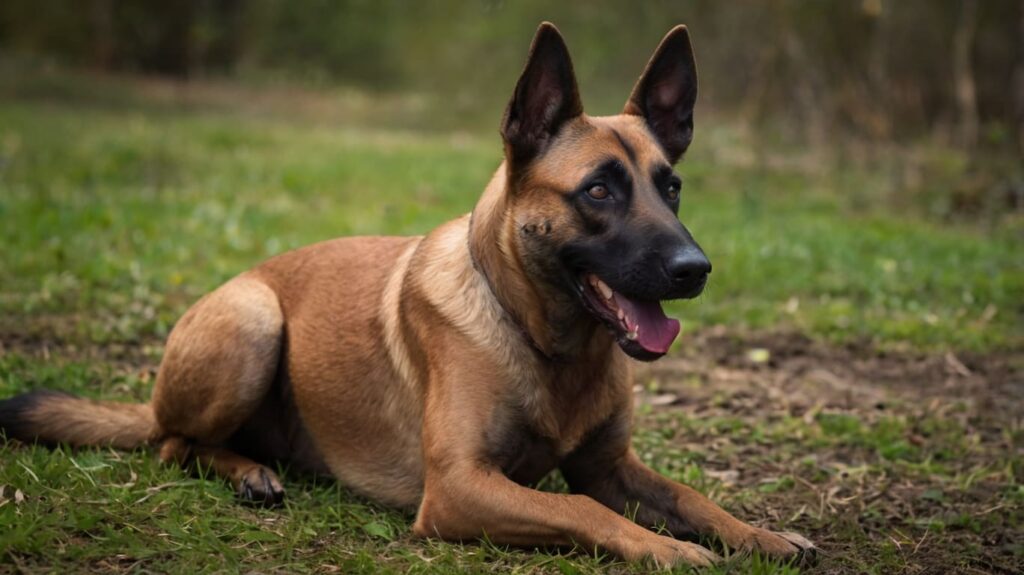
The Agile and Intelligent Worker
Another popular police dog breed is the Belgian Malinois. While they may look similar to the German Shepherd, they are lighter and faster. Their agility, combined with their sharp intellect, makes them perfect for roles requiring quick responses, such as apprehending suspects or performing high-speed chases.
Labrador Retriever

Specialized in Detection and Tracking
Labrador Retrievers are often associated with detection roles rather than apprehension. Their excellent sense of smell makes them ideal for bomb detection, narcotics searches, and even tracking missing persons. Their calm and friendly temperament also allows them to work closely with civilians without posing a threat.
Doberman Pinscher

The Loyal Guardian
Doberman Pinschers are sleek and fast, making them excellent choices for chasing down suspects. They are also highly trainable, which makes them suitable for a variety of police work roles. Their strong loyalty to their handlers also sets them apart from other breeds.
Rottweiler
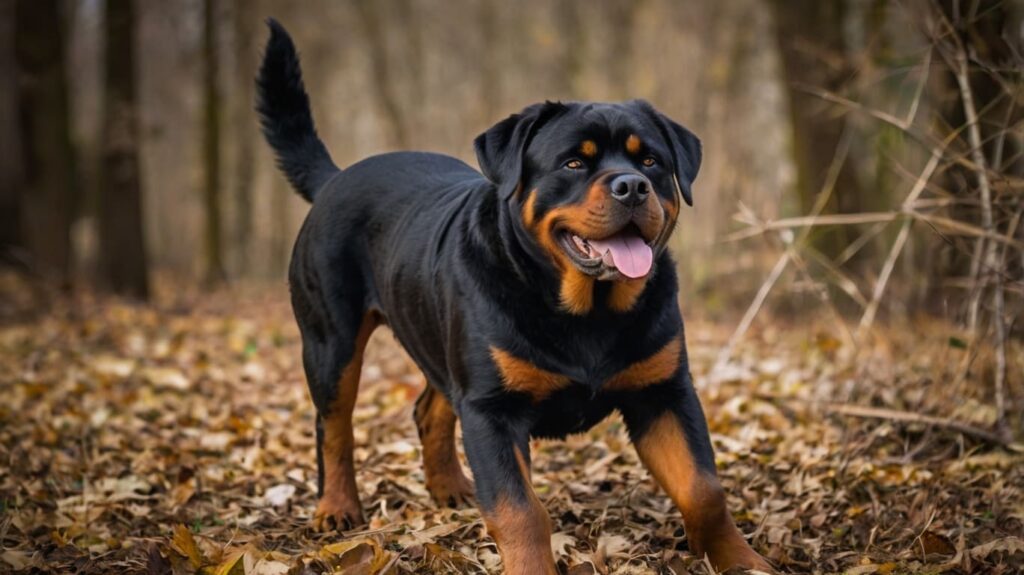
The Powerful Enforcer
Rottweilers are another powerful breed often used in law enforcement. They are known for their strength and intimidation factor, which can be useful in situations where a strong physical presence is required. Despite their tough exterior, Rottweilers are also trainable and capable of performing a wide range of police duties.
Bloodhound

Exceptional Scent Tracking
When it comes to tracking and scent detection, Bloodhounds are unrivaled. Their incredible sense of smell allows them to track scents over long distances and difficult terrain, making them invaluable in search-and-rescue missions as well as criminal investigations.
American Pit Bull Terrier
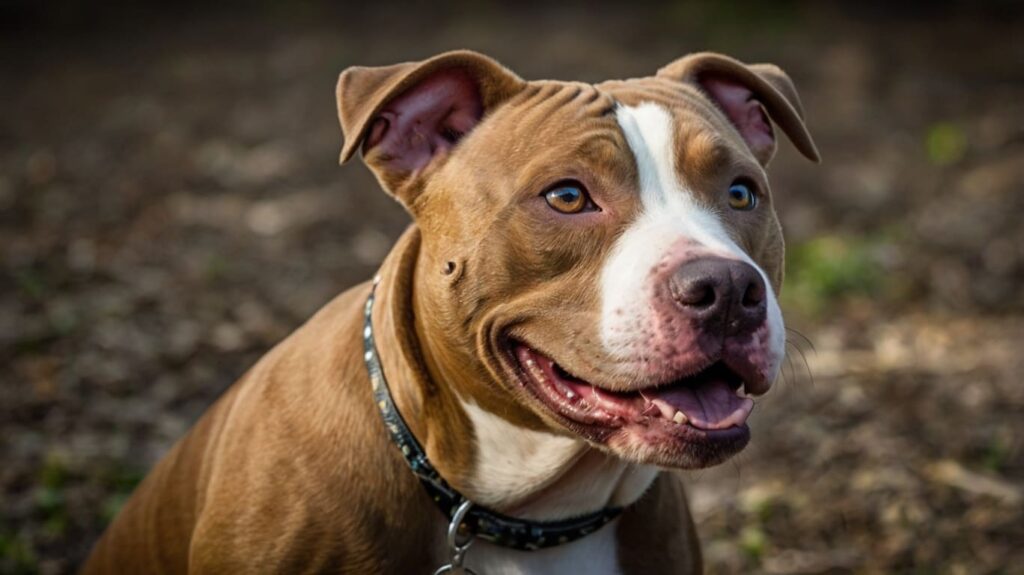
Resilient and Determined
Although controversial, the American Pit Bull Terrier is sometimes used in law enforcement due to its determination, strength, and resilience. These dogs, when properly trained, can be excellent at specific tasks such as apprehension and drug detection.
Traits of an Ideal Police Dog
Choosing the right police dog breed involves evaluating several important traits. Not all breeds, even those known for their intelligence or physical strength, are suitable for police work. Here are some of the essential traits:
Temperament
A police dog needs to have a stable temperament. While aggression is sometimes necessary, it must be controlled and used appropriately. Police dogs need to remain calm in chaotic situations and must be able to switch from aggression to calmness when the situation demands it.
Intelligence
Problem-solving and the ability to learn new tasks quickly are critical traits in police dogs. These dogs are expected to respond to complex commands and make decisions in the field that can mean the difference between life and death.
Physical Strength and Endurance
Physical capabilities are a major factor when selecting a police dog breed. Dogs that lack the necessary strength or endurance won’t be able to perform tasks like chasing down suspects or maintaining long hours of vigilance during search operations.
Importance of Temperament
One of the most crucial factors in choosing a police dogs breed is temperament. Dogs that are too aggressive can become a liability, while those that are too passive may not respond effectively in high-pressure situations. The ideal police dog maintains a balance: assertive when necessary but also able to de-escalate when given the command. A dog’s ability to remain composed during chaotic situations, such as a crime scene or search-and-rescue mission, is essential. Police dogs are often exposed to stressful environments, and their behavior must remain predictable and controlled at all times.
In addition, a calm temperament allows police dogs to work in close quarters with civilians and other officers. These dogs need to differentiate between threats and non-threats, which can be challenging in fast-moving situations. Proper training helps, but selecting the right breed with a naturally stable temperament is the foundation of effective police work.
Intelligence in Police Dogs
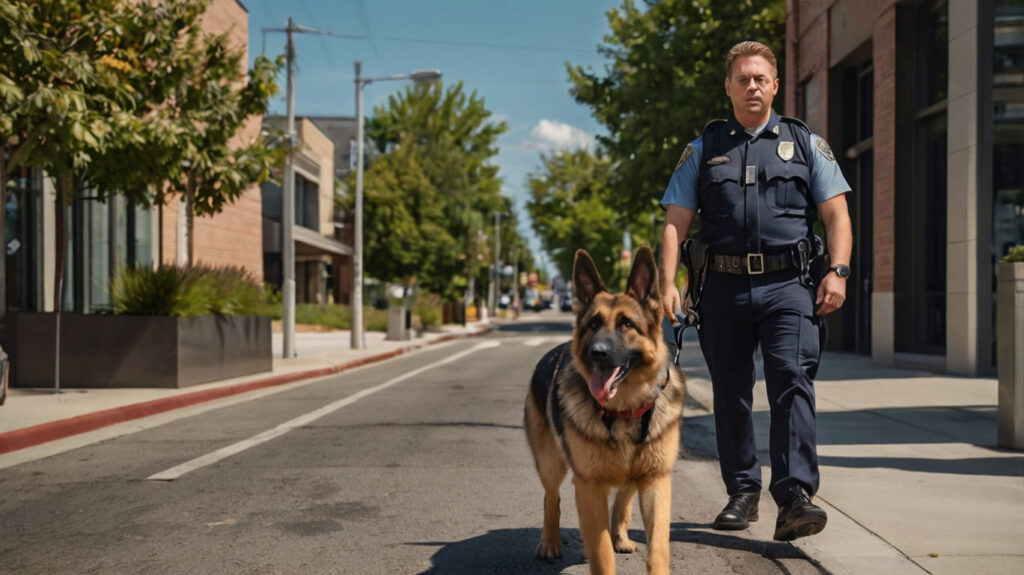
Police work requires dogs that can think on their feet. Intelligence is a critical factor when selecting a police dogs breed, as the tasks they perform often require problem-solving abilities. From recognizing complex commands to adapting to new environments, intelligence allows police dogs to react quickly and effectively in the field. Breeds like the German Shepherd and Belgian Malinois are known for their sharp minds, allowing them to pick up on subtle cues from their handlers and adapt to rapidly changing situations.
For example, in search-and-rescue operations, dogs must be able to navigate difficult terrain, assess dangers, and locate missing persons using their sense of smell and problem-solving abilities. Intelligent police dogs can also be trained for highly specialized roles, such as detecting explosives or narcotics. Their capacity to learn complex tasks and remember them over time makes them invaluable to law enforcement agencies.
Training Methods for Police Dogs
Training police dogs is no small feat. Whether the goal is to train them for patrol duties, detection work, or tracking, the methods used must cater to the individual dog’s personality, breed, and assigned tasks. Two prominent training methods are commonly employed: positive reinforcement and traditional methods.
Positive Reinforcement: This method focuses on rewarding good behavior, encouraging the dog to repeat actions that lead to rewards, such as treats or praise. Positive reinforcement helps build trust between the dog and its handler, creating a more cooperative working relationship. This approach is particularly effective with breeds like Labradors and German Shepherds, which respond well to praise and enjoy the mental stimulation of learning new tasks.
Traditional Methods: These techniques often rely on discipline or corrective measures when the dog disobeys commands. While some dogs respond well to this method, it’s generally less favored today as it may lead to stress or a lack of trust between the dog and its handler. However, for more aggressive breeds, a combination of traditional and positive reinforcement methods may be necessary to ensure the dog understands the boundaries of its work.
Regardless of the method, early and consistent training is key. Police dogs undergo extensive training programs, sometimes lasting up to two years, to master the skills needed for their specific role.
Physical Strength and Endurance
Physical strength and endurance are critical in the selection of police dogs breed. Police dogs need to be able to chase down suspects, subdue them if necessary, and work for long hours without showing signs of fatigue. Certain breeds, such as the Rottweiler and Doberman Pinscher, are known for their muscular build and stamina, making them excellent choices for roles that require significant physical strength.
In contrast, breeds like the Belgian Malinois are less bulky but make up for it with their agility and speed. These dogs are often employed in roles that require quick reflexes and the ability to navigate through obstacles, such as urban environments or rugged terrains. Endurance is another key factor; dogs that tire easily are unsuitable for long missions, such as search-and-rescue operations, where they may need to track a scent for hours.
Ultimately, the physical requirements of a police dog vary based on their role. Detection dogs, for instance, may not need the same level of physical strength as patrol dogs, but they must still have the stamina to perform their duties effectively.
Specialized Roles for Police Dogs
The diversity within police dogs breed enables them to serve in a variety of specialized roles. Each role requires different traits and capabilities, making breed selection critical. Below are some of the key specialized roles for police dogs:
Bomb Detection
In bomb detection, police dogs use their extraordinary sense of smell to detect explosives. Breeds like the Labrador Retriever and German Shepherd excel in this role due to their ability to focus on specific scents even in crowded or chaotic environments. Bomb detection dogs are trained to identify the chemical components in explosives and alert their handlers without disturbing the bomb itself.
Narcotics Detection
Similarly, police dogs trained for narcotics detection must have a highly developed sense of smell. These dogs can detect the scent of drugs even when they’re hidden in complex containers or masked by other smells. Labradors and Belgian Malinois are often used for narcotics detection because of their ability to remain calm and focused during searches, whether at airports, border crossings, or crime scenes.
Search and Rescue
Search-and-rescue dogs are deployed in a wide range of environments, from natural disasters to urban search missions. Bloodhounds are particularly famous for their tracking abilities, using their powerful sense of smell to follow a scent trail over long distances. These dogs are invaluable in locating missing persons or recovering evidence in criminal investigations. Search-and-rescue missions can take place in extreme weather or hazardous conditions, so dogs in this role need to be resilient and highly trained.
Patrol and Apprehension
Breeds like the German Shepherd and Rottweiler are often used in patrol and apprehension roles. These dogs need to be able to pursue and, if necessary, subdue suspects. Their size, strength, and controlled aggression make them ideal for this physically demanding work. In some cases, police dogs are also used to guard high-security facilities, using their keen senses to detect intruders or threats.
Police Dogs in Urban vs. Rural Settings
Police dogs must be adaptable to their environments, whether working in urban or rural settings. Different police dogs breeds perform better in certain settings based on their temperament, agility, and physical capabilities.
Urban Environments
In urban areas, police dogs face numerous challenges, such as navigating through crowded streets, responding to sudden noises, and working around pedestrians. Dogs like the Belgian Malinois are well-suited for urban work due to their agility and quick response times. These dogs can easily maneuver through tight spaces, climb stairs, and chase suspects in congested areas.
Rural Settings
Rural environments present different challenges, such as vast open spaces, rough terrains, and fewer distractions. Breeds like the Bloodhound, with their powerful sense of smell, excel in rural search-and-rescue operations. In these settings, endurance and tracking abilities are more important than agility, making dogs like the German Shepherd and Rottweiler effective for rural patrols.
How Police Dogs Bond with Handlers
The bond between a police dog and its handler is crucial for effective teamwork. Police dogs need to trust their handlers and be willing to follow commands, even in stressful or dangerous situations. Building this bond takes time and consistent training. Handlers often work with the same dog throughout its career, developing a strong partnership based on trust and communication.
Handlers are trained to understand their dog’s behaviors and responses, ensuring that they can work together effectively in the field. The relationship between a police dog and its handler is built on mutual respect and trust, with the dog relying on the handler for guidance and the handler trusting the dog to perform critical tasks.
The Selection Process
Choosing a police dogs breed involves a rigorous selection process to ensure that only the best-suited dogs are chosen for law enforcement. Potential police dogs undergo a series of tests to assess their temperament, intelligence, physical capabilities, and overall suitability for police work. This process helps ensure that each dog selected is capable of performing the demanding tasks required of them.
Some law enforcement agencies have breeding programs specifically designed to produce dogs with the traits needed for police work. In these programs, dogs are bred for qualities such as intelligence, strength, and a stable temperament. The selection process is highly competitive, with only a small percentage of dogs making it through to official police training programs.
Training Programs for Police Dogs
Training a police dog is an intensive, structured process that requires time, patience, and expertise. Police dogs, no matter their breed, need to be equipped with the necessary skills to handle their specialized roles. Training programs vary depending on the specific needs of the law enforcement agency and the dog’s future role. The training can take several months or even years before the dog is fully ready to join the force.
Training programs typically begin when the dog is still a puppy, focusing on basic obedience and socialization skills. These early lessons help ensure that the dog is capable of following commands, responding appropriately to new environments, and interacting with both humans and other animals.
Once the basic training is complete, the dog will move on to more specialized instruction. For instance, a dog trained for narcotics detection will be taught how to recognize specific scents, while a dog selected for patrol work will learn how to track suspects, protect its handler, and apprehend criminals. Breeds like the Belgian Malinois and German Shepherd are often chosen for these advanced roles due to their ability to learn quickly and retain complex commands.
During the training process, the dog and handler often work together, developing a bond that is essential for effective teamwork. Handlers are taught how to interpret the dog’s behavior and how to give commands clearly and effectively. Regular evaluations help ensure that the dog meets the performance standards required for police work.
Police dogs that pass their training exams are certified and assigned to a specific law enforcement unit. However, their training doesn’t stop there—police dogs continue to receive ongoing training throughout their careers to keep their skills sharp and adaptable to new challenges.
Health and Well-Being of Police Dogs
Police dogs undergo significant physical and mental stress throughout their careers, which is why their health and well-being are top priorities for law enforcement agencies. Regular veterinary check-ups are mandatory to ensure that police dogs remain in optimal health. These check-ups focus on their physical condition, including joints, muscles, and cardiovascular health, as these dogs often engage in physically demanding tasks such as chasing suspects or enduring long patrols.
Nutrition is another important aspect of maintaining the health of police dogs. Dogs involved in law enforcement require a specialized diet that supports their high activity levels. Protein-rich diets help maintain muscle mass, while other nutrients support joint health and energy levels. Police dogs typically follow a strict feeding regimen that keeps them in peak physical condition without risking weight gain or lethargy.
In addition to physical health, mental well-being is also crucial. Police dogs need downtime to relax and decompress, especially after particularly stressful or intense operations. Handlers are trained to recognize signs of stress or burnout in their dogs and adjust their workload accordingly. Regular breaks and mental stimulation through play or training exercises help keep the dogs mentally engaged and balanced.
Providing a healthy work-life balance for police dogs ensures they can continue to perform their duties effectively throughout their careers. Agencies understand that these animals are not just tools; they are partners, and their well-being is essential for success in law enforcement roles.
Retirement of Police Dogs
Like human officers, police dogs eventually reach a point where they must retire. Retirement typically occurs when the dog reaches an age where its physical capabilities begin to decline, usually between 8 and 10 years of service. However, the exact timing of a police dog’s retirement can vary depending on its breed, role, and overall health.
When a police dog retires, law enforcement agencies make every effort to ensure the dog’s transition to civilian life is smooth. In many cases, the dog is adopted by its handler, who has developed a close bond with the animal over years of working together. This ensures that the dog spends its retirement in a familiar and caring environment. If the handler is unable to adopt the dog, other officers or carefully vetted families are given the opportunity to adopt the retired police dog.
Retired police dogs often face health challenges as they age, particularly if they spent many years in physically demanding roles. For this reason, many police departments and nonprofit organizations offer support to help cover the cost of veterinary care for retired police dogs, ensuring they enjoy a comfortable and healthy retirement.
Retirement allows police dogs to finally relax and enjoy life as pets after years of loyal service. While they may no longer be active members of law enforcement, their contributions to public safety remain highly valued and appreciated.
Police Dogs and the Legal System
Police dogs occupy a unique position in the legal system. In many countries, harming a police dog is considered a serious offense, often carrying the same legal consequences as assaulting a human officer. This reflects the vital role that police dogs play in maintaining public safety and the high regard in which they are held by law enforcement agencies and the public alike.
In some jurisdictions, police dogs are even granted special legal protections that extend beyond their active years. For instance, some states in the U.S. have enacted laws ensuring that retired police dogs receive appropriate medical care and financial support. These legal frameworks recognize the significant contributions police dogs make throughout their careers and seek to protect their well-being even after retirement.
Additionally, evidence gathered by police dogs, such as drugs detected by a narcotics dog, is often admissible in court, further illustrating the integral role these animals play in the criminal justice system. However, there are occasional legal challenges to the use of police dogs, particularly concerning the accuracy of their scent detection and the training methods used. Despite these challenges, police dogs remain trusted and reliable partners in law enforcement efforts worldwide.
Myths About Police Dogs
Despite their widespread use, there are several myths and misconceptions surrounding police dogs. Let’s take a moment to debunk some of the most common misunderstandings:
Myth: Police dogs are overly aggressive.
In reality, police dogs are trained to control their aggression and only act when necessary. Breeds like the German Shepherd and Belgian Malinois are chosen not just for their strength, but for their ability to remain calm and follow commands even in high-pressure situations.
Myth: Any dog can be trained to be a police dog.
Not every dog breed is suitable for police work. Police dogs need to possess a unique combination of intelligence, strength, and temperament. Breeds like Bloodhounds for tracking or Rottweilers for patrol duties are specifically selected because they naturally exhibit the traits needed for law enforcement roles.
Myth: Police dogs are dangerous around civilians.
Police dogs are highly trained and disciplined. They are taught to distinguish between threats and non-threats, and they only act aggressively when commanded to do so by their handler. In most situations, police dogs are friendly and approachable when off-duty.
Myth: Police dogs are only used for apprehending suspects.
While apprehension is an important role for some breeds, police dogs are also widely used for search-and-rescue missions, bomb detection, narcotics searches, and even detecting digital evidence in cybercrime cases.
The Future of Police Dogs
As technology continues to evolve, so does the role of police dogs in law enforcement. While drones, robots, and artificial intelligence have begun to assist in certain law enforcement tasks, police dogs remain irreplaceable in areas where technology falls short—especially in scent detection, tracking, and emotional intelligence.
In the future, it is likely that police dogs will continue to work alongside technological advancements, enhancing their capabilities rather than being replaced by them. For instance, dogs equipped with body cameras can provide real-time information to officers during high-stakes operations, giving law enforcement an additional layer of intelligence. Additionally, advances in health care for dogs will likely extend the working lives of police dogs, ensuring that they remain healthy and effective for longer.
The enduring partnership between humans and dogs in law enforcement is a testament to the unique qualities that police dogs possess. As their roles expand and adapt to the changing landscape of policing, police dogs will continue to be essential assets in protecting communities worldwide.
Conclusion
Police dogs have proven to be invaluable members of law enforcement agencies, with their unique abilities, intelligence, and loyalty making them perfect partners for officers. Each police dogs breed has its own strengths, whether it’s the German Shepherd excelling in patrol and protection work, the Bloodhound dominating search-and-rescue missions, or the Labrador Retriever specializing in detection roles. These breeds undergo extensive training to ensure they can perform their duties effectively and safely, all while maintaining their health and well-being.
As we look to the future, police dogs will continue to play a crucial role in law enforcement, adapting to new challenges and technologies while remaining irreplaceable in areas that require emotional intelligence, scent detection, and physical prowess. Through their service, police dogs will remain trusted, loyal companions in the ongoing effort to ensure public safety and security.
FAQs
Disclaimer: All images in this article were created with AI in Playground AI and Leonardo AI